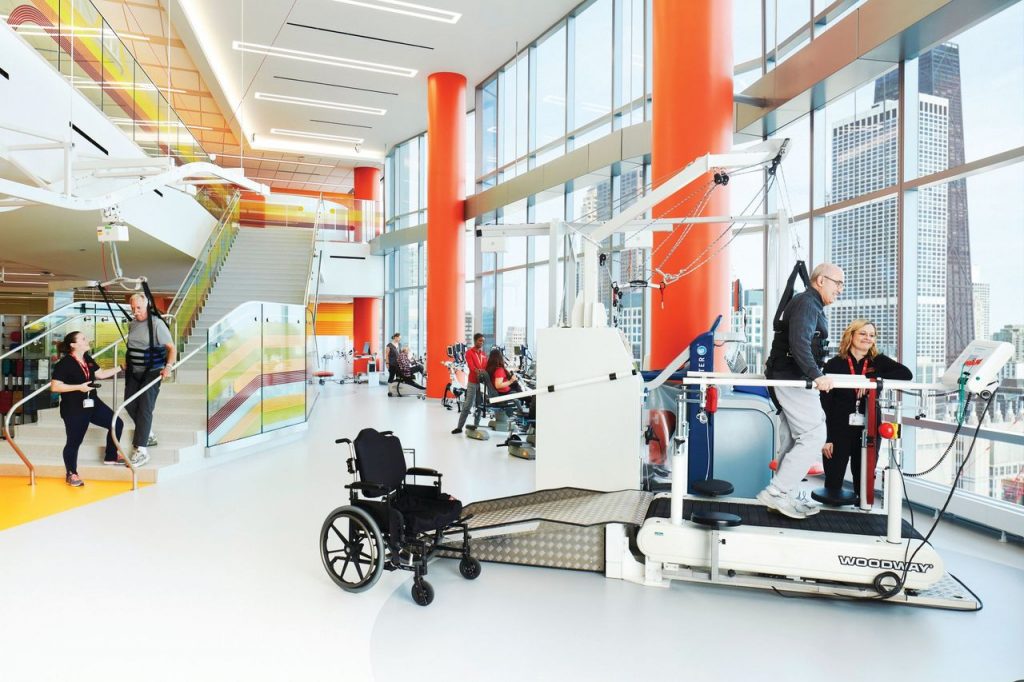Shirley Ryan Ability Lab Outcome Measures

The Shirley Ryan AbilityLab, a global leader in rehabilitation research and patient care, is under increasing scrutiny regarding the transparency and accessibility of its outcome measures. While the institution champions its innovative approach and patient success stories, questions linger about the specific data used to substantiate these claims and how effectively these measures translate into real-world improvements for individuals with disabilities.
At the heart of this discussion lies the need for clear, objective, and universally understandable metrics to assess the effectiveness of rehabilitation interventions. This article delves into the specific outcome measures employed by the Shirley Ryan AbilityLab, explores the challenges in interpreting and applying these measures, and examines the broader implications for the field of rehabilitation medicine, including the perspectives of patients, researchers, and other healthcare providers. Furthermore, it aims to foster a more transparent dialogue about outcome measurement in rehabilitation to enhance patient care and improve the lives of individuals with disabilities.
Outcome Measures at the Shirley Ryan AbilityLab
The Shirley Ryan AbilityLab utilizes a variety of outcome measures designed to capture different aspects of patient function and well-being. These measures encompass physical function, cognitive abilities, psychological well-being, and social participation. Standardized assessments, such as the Functional Independence Measure (FIM) and the Berg Balance Scale, are frequently employed.
The FIM assesses an individual's level of independence in performing activities of daily living (ADLs), including self-care, mobility, and communication. The Berg Balance Scale evaluates a person's balance abilities through a series of functional tasks, indicating risk of falls. These tools offer quantitative data on a patient's progress throughout their rehabilitation journey.
Challenges in Interpretation and Application
Despite the use of standardized measures, interpreting and applying outcome data in a meaningful way presents several challenges. The complexity of rehabilitation interventions and the heterogeneity of patient populations make it difficult to isolate the impact of specific treatments. Moreover, the reliance on subjective assessments can introduce bias and variability into the data.
Furthermore, the transferability of outcome measures from the controlled environment of a rehabilitation facility to the real-world settings where patients live and work is a critical concern. A patient who demonstrates improved FIM scores within the Shirley Ryan AbilityLab might still face significant challenges in navigating their home, community, or workplace.
Another hurdle is the potential for "ceiling effects," where patients with relatively high levels of function at baseline show little improvement on standardized scales, even if they experience meaningful gains in other areas. Conversely, "floor effects" can occur when patients with severe impairments show minimal changes on standardized scales, obscuring incremental progress.
Patient Perspectives and Experiences
Understanding the patient's perspective is paramount when evaluating the effectiveness of rehabilitation interventions. While quantitative outcome measures provide valuable data, they often fail to capture the nuances of individual experiences, such as changes in quality of life, self-esteem, or social connectedness.
Patient-reported outcome measures (PROMs), such as questionnaires and interviews, can help to address this gap by providing insights into the patient's subjective experience. These measures can assess pain levels, fatigue, emotional well-being, and satisfaction with care. However, the interpretation of PROMs can also be complex, as they are influenced by individual perceptions, expectations, and cultural factors.
Anecdotal evidence from patients who have received care at the Shirley Ryan AbilityLab highlights the importance of a holistic approach that considers both quantitative and qualitative data. Many patients report significant improvements in their ability to perform daily tasks, participate in social activities, and pursue their personal goals.
Broader Implications for Rehabilitation Medicine
The discussion surrounding outcome measures at the Shirley Ryan AbilityLab has broader implications for the field of rehabilitation medicine as a whole. The development of more robust, reliable, and patient-centered outcome measures is essential for advancing the science of rehabilitation and improving patient care.
There is a growing emphasis on the use of big data and machine learning to analyze large datasets of patient information and identify patterns that can inform clinical decision-making. These technologies have the potential to personalize rehabilitation interventions and predict patient outcomes with greater accuracy.
Collaborative efforts involving researchers, clinicians, patients, and policymakers are needed to establish standardized outcome measures that are relevant, meaningful, and easily accessible. The National Institutes of Health (NIH) and other funding agencies are investing in research to develop and validate new outcome measures for a variety of conditions.
Moving Forward: Transparency and Collaboration
To enhance the credibility and impact of its research and clinical practice, the Shirley Ryan AbilityLab can take steps to increase the transparency and accessibility of its outcome data. This includes publishing detailed information about the outcome measures used, the data collection methods, and the analysis techniques employed.
Engaging in open dialogue with patients, families, and other stakeholders can foster a more collaborative approach to outcome measurement. Seeking feedback from patients on the relevance and usefulness of outcome measures can help to ensure that these measures are truly patient-centered.
Ultimately, the goal is to create a culture of continuous improvement that is driven by data and guided by the needs and preferences of patients. By embracing transparency, collaboration, and innovation, the Shirley Ryan AbilityLab can continue to lead the way in rehabilitation medicine and improve the lives of individuals with disabilities. The words of Dr. Richard Lieber, Chief Scientific Officer and Senior Vice President of Research at the Shirley Ryan AbilityLab, often emphasize "outcomes driven care, using cutting-edge research and innovative approaches to maximize patient ability." This commitment should be mirrored in the transparent reporting of those very outcomes.


















